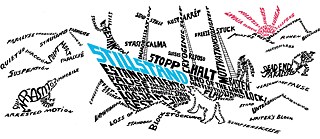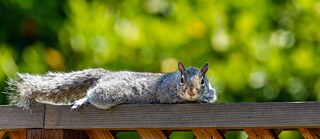Mimicking Stillness
Part 1: Very Slow
There’s a category of things that move so slowly, it appears that they’re at a complete standstill: glaciers, slugs, plants. In this brief love story, Savannah Beck explores the tragedy of moving very, very slowly from the perspective of two continents, desperate to collide.
I’ve dreamed of my great love since I was just a craton, emerging from the depths of the ocean. Back then, everybody called me “Laurentia.” I watched other landmasses drift and collide over the eons, patiently awaiting my own major collision. When the Iapetus Ocean began to wane, eventually disappearing altogether in the Silurian Period, I knew my time had come. That period, I had really come into myself — my crust had thickened, and I now towered far above the seafloor. I could call myself a continent at last! And so, I began to act like one, adopting the more sophisticated moniker “Laurussia” to reflect my newfound sense of maturity.
As I searched for my terrestrial soulmate, my heart naturally gravitated towards the Southern Hemisphere, home to Gondwana. Gondwana was everything I’d ever imagined as a daydreaming craton: he was strong, stable, and — most importantly — he was the largest continent on earth, reaching from the South Pole to the equator. He’d been around since the early Phanerozoic Eon, and there wasn’t a moment I’d gone without thinking about him since his formation.
It was obvious he felt the same about me. Our tectonic connection was palpable, seismic even. He’d been drifting my way since the Ordovician Period. Alas, it’s not easy being a young continent in love. At the rate we were drifting, it would take 100 million years before we could be together, once and for all. To outsiders, it probably looked like we weren’t moving at all, but beneath the surface, our tectonic plates were bringing us ever closer. In the end, love conquers all, including time, distance, and geography.
Finally, one day in the late Paleozoic Era, it happened — slowly and then all at once. Our crusts collided, and we became one: a supercontinent. We’ve been together for 50 million years now, and every day is as earth-shattering as the first. The terranes have even given us a new nickname: “Pangaea.”
As I searched for my terrestrial soulmate, my heart naturally gravitated towards the Southern Hemisphere, home to Gondwana. Gondwana was everything I’d ever imagined as a daydreaming craton: he was strong, stable, and — most importantly — he was the largest continent on earth, reaching from the South Pole to the equator. He’d been around since the early Phanerozoic Eon, and there wasn’t a moment I’d gone without thinking about him since his formation.
It was obvious he felt the same about me. Our tectonic connection was palpable, seismic even. He’d been drifting my way since the Ordovician Period. Alas, it’s not easy being a young continent in love. At the rate we were drifting, it would take 100 million years before we could be together, once and for all. To outsiders, it probably looked like we weren’t moving at all, but beneath the surface, our tectonic plates were bringing us ever closer. In the end, love conquers all, including time, distance, and geography.
Finally, one day in the late Paleozoic Era, it happened — slowly and then all at once. Our crusts collided, and we became one: a supercontinent. We’ve been together for 50 million years now, and every day is as earth-shattering as the first. The terranes have even given us a new nickname: “Pangaea.”






